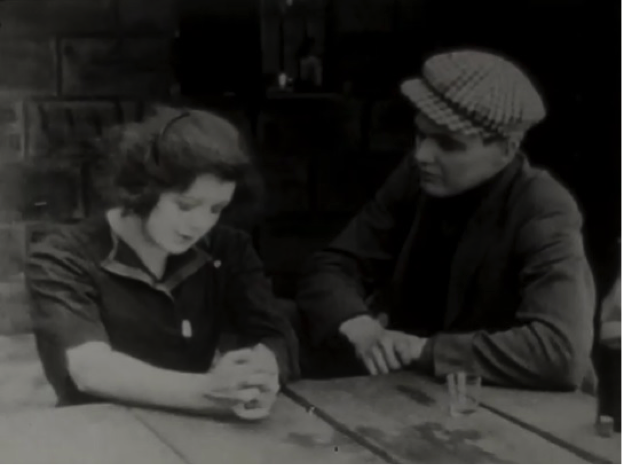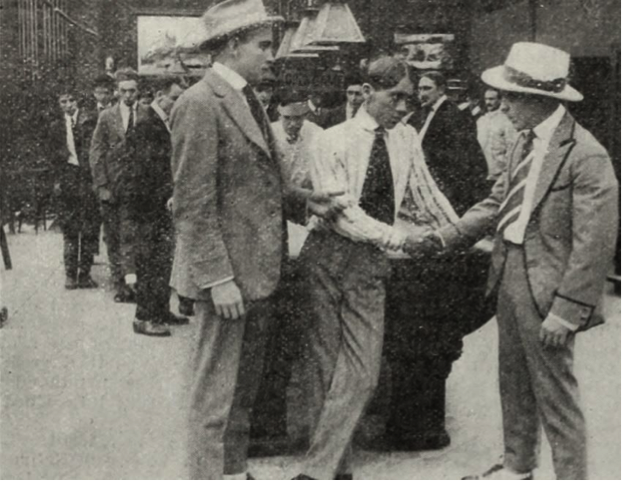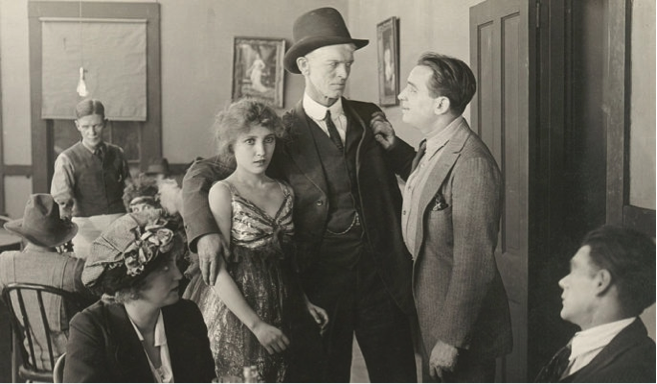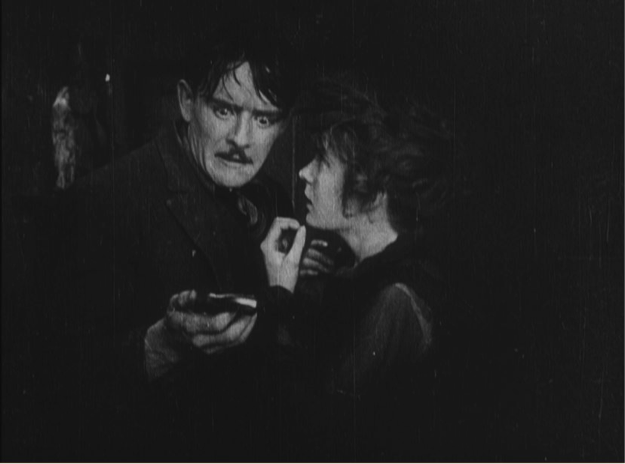Silents are Gold: The Rise Of The Underworld – 5 Gangster Movies From The 1910s
Long before James Cagney and Edward G. Robinson made a splash in Hollywood, gangsters appeared on the American silent screen. While the “gangster” genre wasn’t as well defined as it was in the 1930s, many of its familiar tropes – colloquial dialogue, gunfights, brash ladies, smartly dressed ringleaders – began even earlier than the Roaring Twenties themselves.
The car chases that brought so many early silent films to life were key. In the 1900s, when most people watched “moving pictures” via touring shows, any movie with a thrilling car chase was a crowd-pleaser. Comedies were of course full of comical car chases, but recreations of fast-paced criminal activity such as stagecoach robberies, bank robberies and police pursuits were also popular – the most famous example being probably the most famous The great train robbery (1903). Many of these films were essentially Westerns – a hugely popular genre and certainly the precursor (or perhaps we can say source) to the Depression-era gangster image.
Interestingly, we start seeing movies with recognizable “gangster” tropes in the 1910s, a few years before the Prohibition and Capone era. At that time, people were flocking from the countryside to the cities to find work, and the problem of urban crime was a common theme. Organized gangs in New York City had been prominent since the 19th century, particularly those formed by Irish, Italian, and Chinese immigrants. Public fascination with these gangs’ power struggles was soon reflected in the films. Let’s look at the following films:
5. The Musketeers of Pig Alley (1912)
Recognized today as the great-grandfather of gangster film, The Musketeers of Pig Alley was a dark two-reel film directed by DW Griffith. The four words of the first title card, “New York’s other side,” not only set the stage for its setting in the city’s crowded tenements, but arguably for the crime dramas of the 1930s to come. There are even noir touches to the plot – quite an achievement for an 18-minute film.
Set in the slums of New York, it follows a young couple (played by Lillian Gish and Walter Miller) whose lives are influenced by the rival gangs in their neighborhood. The climax of the film is the tense shootout between the gangs, in which a close up view shows two gangsters cautiously crawling along a wall. A cocky, very Cagney-esque Elmer Booth plays the leader of one of the gangs. The shootings, the seedy neighborhoods, the tough ladies, the charismatic crime leaders, even the “gangster ball” — it’s all there, over 100 years ago.
4. The gangsters and the girl (1914)

Totally in the crime drama category, this Selig three-reel film starred Betty Burbridge and future star Charles Ray. “The Girl,” Molly Ashley, is framed for a shoplifting she did not commit and is sentenced to prison, but compassionate crook Jim Tracy captures her to save her from jail. She lives in hiding with the gang while they try to steal money to help her and her father, but they are infiltrated by police detective John Stone in disguise. When Molly meets the detective and learns his true identity, she begins to argue over who to report, John or Jim.
Shot in Los Angeles but with multiple rooftop shots carefully angled to suggest New York City, The girl and the gangsters has the kind of plot that’s pretty familiar to us today. Interestingly, the crooks are shown in a more sympathetic light than their counterparts in the mid to late 1930s when the production code was enforced.
3. The emergence of crooks (1915)

Starring young Jack Pickford in one of his major early roles, this film is a cautionary tale about the dangers of billiard rooms for impressionable youth, particularly those frequented by unsavory characters. A pharmacist, Walton, accused of selling drug-laced candy to children, is released from prison after mob boss Lee O’Neill intervened. Walton opens a seedy pool room and young Italian Tony becomes one of his pool sharks. Tony soon meets Hazel, O’Neill’s daughter, and tragedy soon follows.
Much less forgiving of the underworld than movies like The girl and the gangsters, The emergence of crooks delivers a dark ending and a strong moral message. It’s not far from classics like Angels with dirty faces (1938) with a similar – albeit more subtle – message.
2. Reggie intervenes (1916)

A short Douglas Fairbanks film with its familiar blend of drama and comedy, set against the backdrop of New York’s Bowery. While driving a lost little girl home, Reggie meets an impoverished young woman named Agnes. He begins courting Agnes, but unfortunately his romantic rival is local gang leader Tony Bernard. Eventually, Reggie is attacked by Bernard’s gang and soon finds himself in a hand-to-hand combat with Bernard.
Although less well known than many of his other 1910s films and saddled with a fairly routine gangster plot, Reggie intervenes shows a pretty intense fight scene between Reggie and Bernard. It’s more realistically choreographed than some movie fights and more of a close fight than a flashy fist sling.
1.The mother and the law (1919)

Originally filmed by DW Griffith in 1914, this dark drama was eventually expanded and incorporated into its powerful epic intolerance (1916). After that it underwent a little more tinkering before being released as a standalone drama in 1919.
With Mae Marsh and Bobby Harron in two of their finest performances, The mother and the law had more of a specific “underworld” theme and shared some similarities The Musketeers of Pig Alley –a gang leader is even referred to as “the Musketeer”. Marsh and Harron play a young couple whose life is torn apart after “the boy” trying to leave his old life in a gang is accused of murder. When he is sentenced to be hanged, his young wife looks for a way to save his life. Alternately tragic and touching, it illustrates both the hopelessness that drives some to lead a life of crime and how hard it is to escape it.
Movies like this remind us that many movie tropes go back much further than we imagined. They also show us something unexpected: that certain “gangster” tropes not only existed before the Roaring Twenties, but in a sense evolved with the era itself, making these films fascinating and unique time capsules.
…
–Lea Stans for Classic Movie Hub
You can read all Lea’s Silents are Golden articles here.
Lea Stans is a born and raised Minnesotan with a degree in English and an obsessive interest in the silent film era (which she largely credits to Buster Keaton). In addition to blogging about her passion on her website, Silent-ology, she is a columnist for the Silent Film Quarterly and has also written for The Keaton Chronicle.









